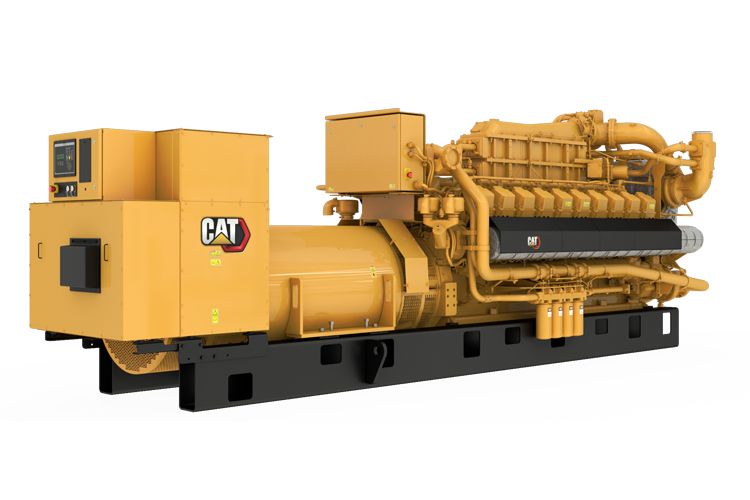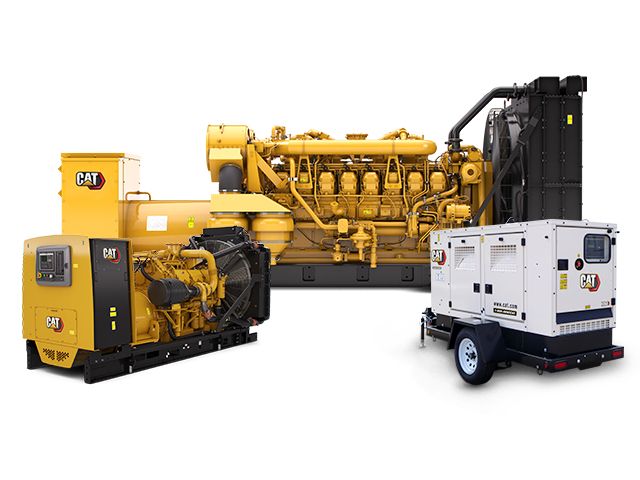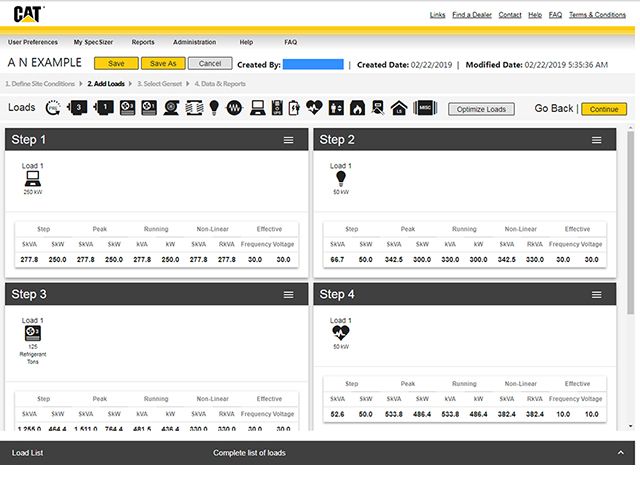Power Need
Santa Clara is a small but growing community near St. George in southern Utah. The city's population grew more than 30 percent from 2000 to 2006. This was due to a booming economy driven by a favorable climate, affordable housing market and proximity to growing metropolitan areas such as Salt Lake City and Las Vegas. Such dramatic growth resulted in a strain on power resources felt by the municipality, businesses and residents.
Santa Clara City Public Works Director Jack Taylor noticed that the city's current policy, a stopgap approach using base load generation contracts supplemented by spot market electrical purchases, would hinder the growth of this municipality's small utility operation. Peak power demands typically occur during the hot summer months in this desert city, when businesses and residences ask for power to run air conditioning systems overtime. This led Taylor to believe that a peak power asset was the best long-term investment to feed the growing electrical demand at the lowest possible cost.
To help overcome its growing power challenges, Santa Clara turned to its local Cat® dealer, Ken Green of Wheeler Power Systems, headquartered in Salt Lake City. Wheeler Power Systems has been the authorized Caterpillar distributor for the state of Utah for 45 years, with responsibility for sales and product support in Utah, centraleastern Nevada and southwest Wyoming.
Wheeler first took an in-depth look at Santa Clara's existing and projected load profiles over the next several years. “Southwest Utah is one of the fastest growing areas in the state, and this area is served by only two power lines from Winter Park,” Green said. “That leads to two problems: big peaks and lines that are over capacity.” This assessment showed an immediate need to cover 2–4 MW of additional peak summer load above the base load of 8–10 MW.
Solution
Santa Clara contracted Wheeler Power Systems to handle the powerhouse design and build. The Santa Clara facility was built out to accommodate immediate delivery of two G3520C natural gas generator sets. The generator sets, rated at 2,055 ekW at 1,800 rpm, operate together with paralleling switchgear rated at 12,470 V. The power is then increased to 69,000 V by an outdoor transformer before connecting to the distribution lines.
With generator sets 20-foot on center, the facility's layout provides a clear path for service trucks to access individual generator sets for regular maintenance. The 22-foot ceiling clearance allows trucks with cranes to reach the generator sets. To lessen noise both inside and outside the building, the 10,800 square-foot facility was constructed of solid grout block. Per the city's request, storage space was incorporated above the control room. The building was designed to accommodate an additional four G3520C generator sets to be installed as Santa Clara's peak loads grow over time.
As temperatures in Santa Clara can reach more than 110° F, swamp coolers (also called evaporative coolers) were employed as an economical way of cooling intake air to prevent excessive temperatures both for the generator sets and the building itself. Utilizing simple evaporation of water from the air as opposed to vapor-compression or absorption refrigeration cycles, it is best suited in regions like the Western mountain states, where the air is hot and humidity is low. Two swamp coolers producing 32,000 cubic feet of cooled air per minute serve each generator, keeping air at a uniform 85° F. A portion of the cooled air is also used to keep the ambient air temperature in the building comfortable for workers.
Wheeler provided a turnkey emissions control solution by employing Cat Oxidation Catalysts to dramatically reduce carbon monoxide (CO) emissions and allow for air permits for up to 2,000 hours per unit for a completely built-out plant. Cat Oxidation Catalysts for gas stationary engines lower emissions by converting CO, hydrocarbons and aldehydes into carbon dioxide and water. This can reduce CO by 93 percent in gas engines and decrease hydrocarbons by more than 40 percent. Scheduled maintenance is not required because chemical reactions do not change or consume the catalyst material. However, the catalysts are periodically inspected for physical damage or contamination.
Regular air quality testing was accommodated in the design of the Santa Clara generation station by the location of venturi piping preand postcatalyst for ease of connection to an emissions analyzer. With machines rated to only 0.5 g/ bhp-hr of NOx without aftertreatment, and 0.22 g/bhp-hr of CO with the catalyst, the generator sets easily meet local and federal emissions regulations.
As a member of Utah Associated Municipal Power Systems (UAMPS), Santa Clara interfaces for power purchase and export with other member utilities. Electrical generation decisions—whether running to serve the city load, on request by UAMPS, or for export outside of UAMPS—can be made quickly, and generator sets can come online within a matter of seconds. The switchgear was tailored to Santa Clara's needs to include grid relay protection when exporting energy. The switchgear offers synchronizing and paralleling controls; engine/ generator status, pre-alarm and shutdown fault readout; system control functions for load management; and system status and alarm annunciation.
The system design incorporated a JEMstar power meter from AMETEK Power of Rochester, N.Y., to ensure accurate billing. The meter registers the quantity of energy produced for Santa Clara versus the amount supplied to UAMPS for export.
Principally, the new power generation system will make it possible for the city to ensure adequate power during peak times of consumption and in case of a power emergency, such as a citywide blackout. For example, the new generation system allows the utility to provide enough power to maintain emergency services at healthcare facilities and educational institutions.
It also minimizes the need for expensive power purchases on the open market and provides the utility with an opportunity to generate revenue. “We chose to install this power generation system to hedge our costs of power,” Taylor said. “Throughout the entire West, rates are rising. We'll even be able to market sales to other users within UAMPS.”
Santa Clara chose Caterpillar and Wheeler Power Systems because they have an excellent reputation for providing strong service. “Their referrals were fantastic,” said Taylor. “Wheeler stands behind its product, and is in it for the long haul.”
The 2 MW Cat generator sets were chosen over other models because they best fit Santa Clara's power need. “We're a small community and it would be pretty hard for us to go to a 5 MW generator,” explained Taylor. “We're able to produce 2 MW of power with the G3520C generators, and then add more units to build up to what we need to shape to our load.”
The power station is financed with a 20-year term tax-exempt bond. City officials have made it clear that power rates will not increase to pay for the new building or for operation of the facility.
Results
The power system commenced operation in January 2007. The project management team went from city approval to having the system online and fully operational in only six months, allowing the City of Santa Clara to keep costs down and emissions at low levels.
So far, the project has saved the city approximately $80,000 in about a year. “Basically, the generation system lets us pay ourselves instead of the market,” said Taylor, who is also a member of the UAMPS board. The city of Santa Clara has already logged 1,030 hours per generator set in the first year of operation. The particularly warm summer of 2007 proved the power plant to be a wise investment. To meet peak-time needs, Santa Clara weighs the cost of purchased power against the cost of in-house generation and chooses the lowercost option. Utility staff shops the market for attractive unit-contingent or interruptible power purchases targeted to meet forecasted needs for specific hours of the day. They avoid large, long-duration, 24-hour, firm-delivery contracts.
But the benefits go beyond the monetary savings. Reliability and performance also contribute to the success of the power system. “We ran the generator sets almost every day of July and August, 14 to 16 hours a day,” said Brent Davis, power supervisor for the city. “The generator sets produce anywhere from 1 MW to 2.5 MW per day, depending on the needs,” Davis said. The in-house generating system provides a foundation of price stability. It frees the City of Santa Clara from playing the often-volatile spot market for on-peak energy. In an emergency, the system could carry a substantial share of base load. Advanced gas-fueled Cat generator sets combined with a flexible operating strategy have provided Santa Clara residents with a reliable, affordable electric power source for many years to come.
Download the Power Profile







